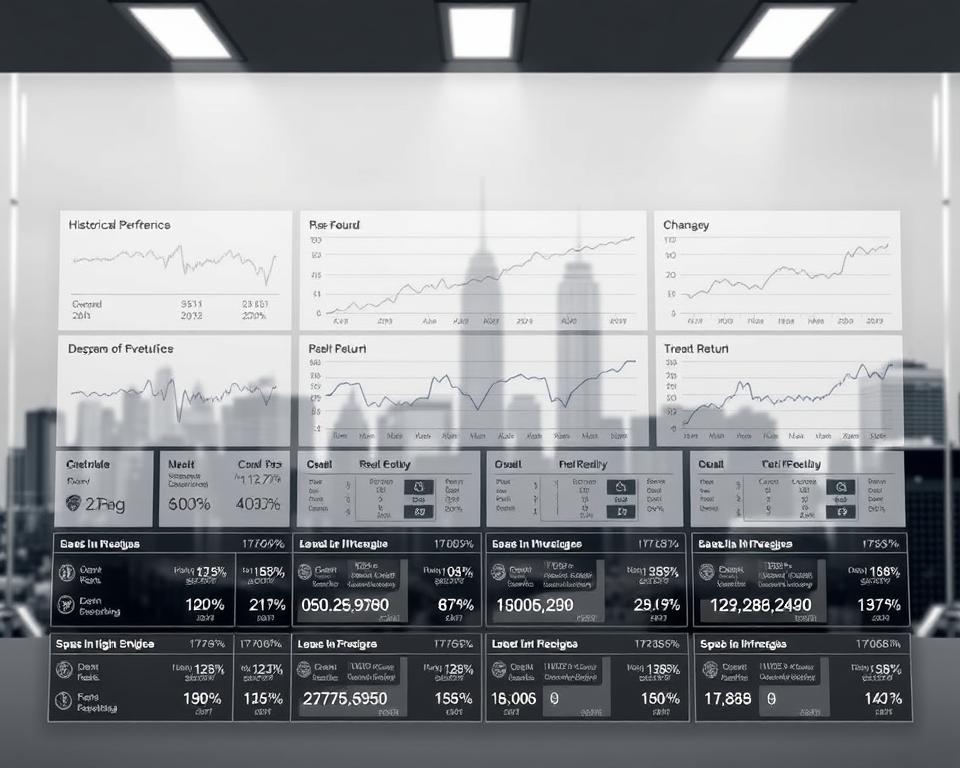What CLO Equity Investors Should Know – An Overview
It’s true: more than 60% of institutional investors consider CLOs indispensable to their portfolios. Exploring the realm of CLO bonds reveals why this asset class is becoming more attractive. Investors enjoy the prospect of compelling yields, steady cash flows, and risk spreading. They provide a safeguard against market volatility.
Here, we unpack the essentials of CLO equity. Topics include the value of veteran CLO managers, the distinctive features of CLO equity vehicles, and investor roles. Ultimately, you’ll see why CLO equity is an enticing option for those looking to improve their holdings.
- CLOs offer significant diversification benefits for institutional investors.
- Cash flows from CLO equity often translate into high returns.
- The track record of seasoned managers greatly influences results.
- These investments often act as a cushion during market slumps.
- CLO equity vehicles are growing in popularity with alternative funds.
CLOs & Equity Tranches Explained
A deep dive into CLOs uncovers their significance in today’s markets. They consist of pools of senior-secured, non-investment grade debt. They make up a significant part of the $1.4 trillion structured credit market. Investors are keen to grasp the essence of these instruments, focusing on what CLO equity represents.
CLO equity is a claim on the remaining cash flows from CLOs after all debt is paid off. In a low-rate environment, this feature delivers attractive income potential. Their variable rates protect investors from rate shifts. This makes CLOs an attractive investment option.
Grasping the structure of CLOs and the specifics of CLO equity is key to assessing their returns and risks. I intend to shed light on these structures. I aim to show their importance in guiding investment choices.

Why Invest in CLO Equity?
These funds provide a novel diversification opportunity. Investors are drawn by proven performance and yields. In volatile markets, its stability is a key draw, positioning CLO equity as a top pick.
Why CLO Equity Returns Stand Out
Investors often see double-digit annual cash yields from CLO equity. Reinvestment phases can push yields into the mid- to high-teens. Hence, it ranks high among high-yield options that maintain credit standards.
Historical Performance of CLO Equity
Built-in resilience shines through CLO equity’s past results. Instead of back-loaded returns like private equity’s J-curve, CLO equity pays steadily each quarter. This makes it a reliable choice for balancing risk and seeking attractive returns, solidifying its place in the financial market.
Understanding the Structure of CLOs
CLO structures are complex, yet they offer a compelling investment opportunity. Central to CLOs is the cash waterfall, dictating payment order across tranches. Every slice carries distinct risk-reward characteristics. Senior tranches, backed by high-quality collateral, receive payments first. Lower tranches accept more risk hoping for richer payouts.
Senior secured loans are a key component in CLOs. With first-lien status, they top the payment queue if borrowers default. Hence, CLOs often carry lower risk than plain corporate bonds, suiting risk-aware investors.
What Sets CLO Equity Apart
Exploring CLO equity investments reveals a standout feature: their cash flow dynamics. They generate large early distributions, speeding payback. Unlike private equity’s longer wait for returns. Recognizing these dynamics highlights CLO equity’s unique market position.
Early Cash Flows in CLO Equity
Cash flow behavior lies at the heart of CLO equity’s allure. They produce hefty early distributions, giving investors quicker payback. By launch, distributions often outpace more conventional assets. Institutions prize this blend of liquidity and yield.
CLO Equity’s Cycle Resilience
Managers adjust portfolios dynamically through economic cycles. They tweak exposures based on evolving market signals. This active management preserves value and allows CLO equity to thrive in changing market conditions. These traits underscore CLO equity’s durability.
CLOs for Risk Spreading
Adding CLOs can broaden portfolio diversification. They offer access to many issuers, reducing single-credit exposures. The low correlation with traditional assets like stocks or bonds adds stability.
Manager-driven adjustments set CLO equity apart. They tweak allocations to optimize returns amid shifting climates. It’s critical for risk control and portfolio durability.
The diverse assets in CLOs not only spread risk but also stabilize cash flow. Ideal for anyone needing reliable cash in choppy markets. By investing in CLO funds, I position myself for a diversified investment strategy.
Understanding Potential Downsides
Understanding risk elements is crucial before investing in CLO equity. The economic landscape shifts constantly, making it critical for credit risk investors to stay alert to these risks. They must be aware of the vulnerabilities tied to these investments.
Credit Risks in CLO Equity
Credit and collateral risks are at the heart of CLO risk factors. Recessions often spike credit losses. If the economy slows, leveraged loans may struggle. Thus, equity distributions risk being cut when loan values fall.
This scenario poses significant risks to equity holders. I assess loan ratings and collateral buffers before investing. This ensures I’m aware of the risks involved.
Market Risk in CLO Equity
Another key concern is how readily equity can be sold. In times of financial stress, the market for CLO equity can become tight. You might have to accept deep markdowns to exit positions. Investor mood swings can swing prices sharply downward.
Watching liquidity indicators is vital for risk management. Selecting managers with a track record of preserving capital under stress can blunt downside.
Exploring CLO equity investment strategies is key to aligning with my financial goals and risk tolerance. Different methods cater to diverse investor profiles. Consider these popular structures:
- In-house Equity Vehicles: They focus on selected equity tranches. They give me access to a broad tranche mix managed by experts.
- Direct Deal-by-Deal Investments: It offers bespoke equity positions per deal. It offers more control over my choices but requires deep market knowledge.
- Credit Blended Portfolios: They blend equity tranches with other debt products. This creates a balanced portfolio that may reduce risk.
Each strategy has its benefits and considerations. Captive vehicles suit those new to the space. They deliver oversight and built-in risk spreading. Direct investments, while potentially rewarding, require a deep understanding of the market. Hybrid credit funds bring together multiple asset types for stability.
Evaluating these options allows me to optimize my mix. This aligns with my investment philosophy, resources, and risk tolerance.
The Role of CLO Managers in Performance
CLO equity managers are essential for the success of collateralized loan obligations. Their reinvestment tactics can materially enhance outcomes. Their engagement steers portfolios through tough markets. It positions them to optimize performance.
Opting for a proven team matters most. It’s important to select individuals or teams with a proven track record in risk mitigation and refinancing. Top managers pivot swiftly as markets shift, improving results. Their ability to make informed decisions and manage assets wisely keeps portfolios resilient, even in economic fluctuations.
Manager choice often dictates equity outcomes. Understanding their role is vital for investors aiming to improve their CLO equity outcomes.
Comparative Analysis: CLO Equity vs. Other Investments
Next, we pit CLO equity against private equity and high-yield debt. This analysis aims to help investors understand where CLOs fit in their investment strategy. Knowing these distinctions is key to smart allocations.
Comparing CLO Equity and Private Equity
These two asset classes diverge in important ways. CLOs offer liquidity and quicker cash flow access, unlike private equity, which can be locked up for years.
- Risk factors: Hands-on business turnarounds in PE can amplify downside. Pooling many credits tempers single-issuer exposure.
- Performance Patterns: Long-haul PE upside is tempting, yet CLOs offer predictable, competitive current yields.
- Investment horizon: You’re locked in with PE, but can exit CLO equity relatively swiftly.
Comparing CLO Equity and High-Yield Debt
Next up: high yield bonds versus CLO equity. They produce income, although their mechanics and hazards vary. Junk bonds pay set coupons but swing when rates shift.
- Income Edge: CLO equity benefits from cash flows from a diversified portfolio of leveraged loans.
- Default Exposure: HY credit rests on one company, while CLOs dilute single-issuer risk.
- Investment returns: It can outpace HY bonds when credit spreads tighten, without the same rate risk.
On the horizon, CLO investing looks poised for transformation. Emerging CLO ETFs may open the market to new investor classes. This development could bring about increased liquidity and transparency, fundamentally altering how we view CLO equity investments.
New rules may soon reshape CLO issuance and valuation. These updates might address concerns over risk management and valuation, leading to more uniform practices. Being aware of these reforms will guide my investment approach.
New tech will revolutionize how we analyze and price CLO tranches. They support sharper analysis of loan pools and economic signals. They allow me to spot and act on nascent credit opportunities.
